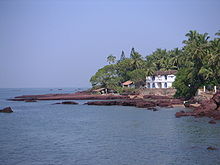Amazon enjoyed a 22 per cent jump in global sales to $15.7bn
(£10.2bn) between April and June, but growing expenses pushed it into
the red.
The web giant, which is under fire for tax avoidance as it routes billions of pounds from sales to British customers through Luxembourg to pay negligible British tax, is spending billions trying to diversify from a warehouse and online store to become a broader digital company. It is selling its Kindle tablets alongside cloud computing, video streaming and digital downloads, as well as investing heavily in expanding into new markets such as China.
Due to that spending, the company fell to a $7m loss in the second quarter of the year – in contrast to the $7m profit it made in the corresponding period a year earlier.
However, a sales boycott sought by campaigners angry about its tax arrangement does not appear to have had an impact. Sales at Amazon's international division, which includes the British website, actually rose by 13 per cent to $6.2bn during the three months. Bestsellers at its UK website were dominated by Kindle books and baby products, Amazon said.
The most-downloaded e-books in the three months were Inferno and titles by self-published authors using Kindle Direct Publishing, including No-One Ever Has Sex On a Tuesday by Tracy Bloom and The Magpies by Mark Edwards. Other best-selling items included the Gro Anywhere Blackout Blind in Amazon's baby department, Pampers wipes and the Philips juicer.
The site's founder and chief executive, Jeff Bezos, claimed Amazon's emphasis on technology was paying off: "This past quarter, our top 10 selling items worldwide were all digital products – Kindles, Kindle Fire HDs, accessories and digital content." The company is opening a new 12-storey office in central London later this year. When fully complete, the building at 60 Holborn Viaduct will accommodate more than 1,600 people.
The web giant, which is under fire for tax avoidance as it routes billions of pounds from sales to British customers through Luxembourg to pay negligible British tax, is spending billions trying to diversify from a warehouse and online store to become a broader digital company. It is selling its Kindle tablets alongside cloud computing, video streaming and digital downloads, as well as investing heavily in expanding into new markets such as China.
Due to that spending, the company fell to a $7m loss in the second quarter of the year – in contrast to the $7m profit it made in the corresponding period a year earlier.
However, a sales boycott sought by campaigners angry about its tax arrangement does not appear to have had an impact. Sales at Amazon's international division, which includes the British website, actually rose by 13 per cent to $6.2bn during the three months. Bestsellers at its UK website were dominated by Kindle books and baby products, Amazon said.
The most-downloaded e-books in the three months were Inferno and titles by self-published authors using Kindle Direct Publishing, including No-One Ever Has Sex On a Tuesday by Tracy Bloom and The Magpies by Mark Edwards. Other best-selling items included the Gro Anywhere Blackout Blind in Amazon's baby department, Pampers wipes and the Philips juicer.
The site's founder and chief executive, Jeff Bezos, claimed Amazon's emphasis on technology was paying off: "This past quarter, our top 10 selling items worldwide were all digital products – Kindles, Kindle Fire HDs, accessories and digital content." The company is opening a new 12-storey office in central London later this year. When fully complete, the building at 60 Holborn Viaduct will accommodate more than 1,600 people.







 “We do not want the evil of casinos to spread to other parts of the
state. They should be in the Mandovi (a river off Panaji) or out of
Goa,” party spokesperson Reginaldo Lourenco told the media.
“We do not want the evil of casinos to spread to other parts of the
state. They should be in the Mandovi (a river off Panaji) or out of
Goa,” party spokesperson Reginaldo Lourenco told the media.